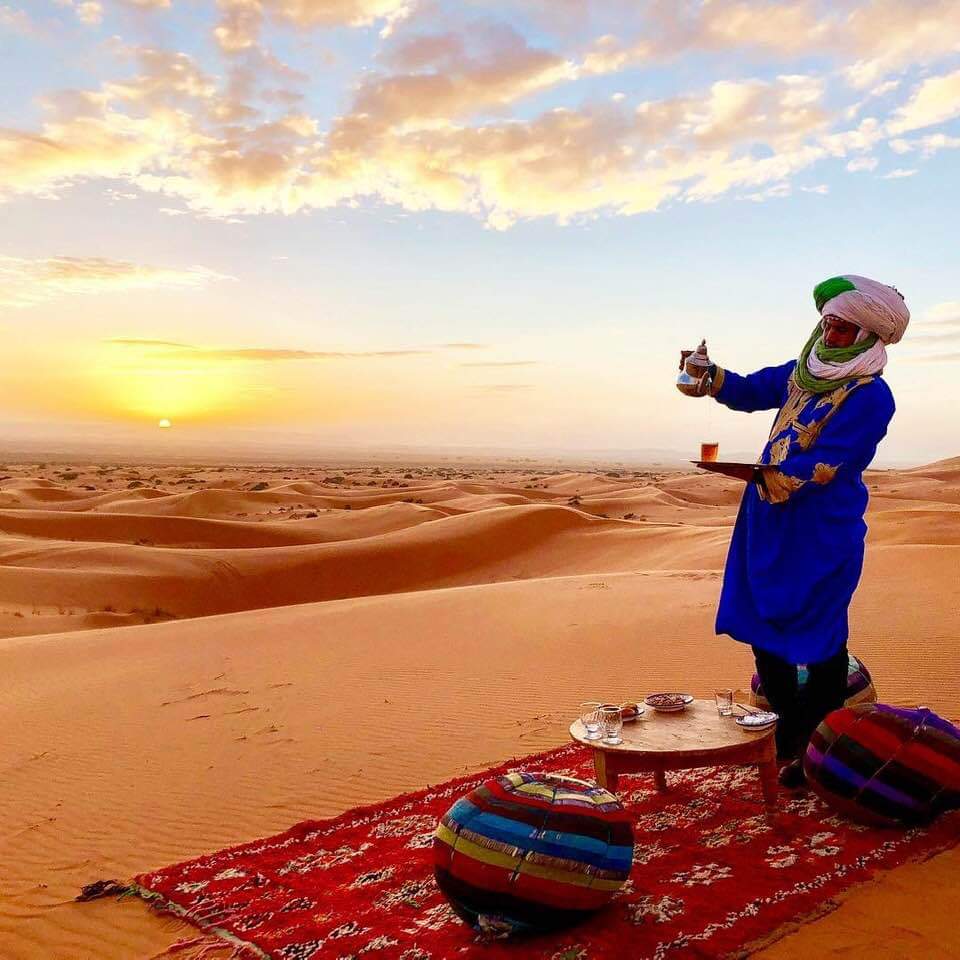Call us : +212 662 432890

Morocco Desert Tour
Morocco Desert tours are becoming increasingly popular among travelers seeking adventure, culture, and breathtaking landscapes. If you’re planning your own Morocco Desert tour, this guide provides everything you need to know to create an unforgettable experience. From desert locations to activities, transportation tips, and ideal travel times, our guide ensures your journey is perfectly tailored to your preferences.
Where is the Desert in Morocco?
The Sahara Desert stretches along Morocco eastern border with Algeria, covering vast landscapes filled with rolling sand dunes, rocky plateaus, and scenic oases. As one of the largest deserts in the world, the Sahara spans an area comparable to the United States. Due to its remote location, visiting the Sahara requires planning, whether you choose Morocco Desert tours or a private Morocco tour.
Is there a Desert near Marrakech?
While Marrakech is sometimes called a desert city, its climate is more Mediterranean than true desert. However, it serves as a key gateway for Morocco Desert tours. Just 40 minutes from Marrakech lies the Agafay Desert a rocky, moon-like landscape. Unlike the Sahara, Agafay doesn’t feature towering sand dunes, but it offers stunning minimalist vistas, camel rides, Bedouin camp experiences, and panoramic views of the High Atlas Mountains. It’s perfect for travelers with limited time who want a taste of desert adventure without venturing deep into the Sahara.
How far is the Sahara Desert from Marrakech?
The Sahara Desert has two main dune regions: Erg Chebbi near Merzouga and Erg Chigaga near M’hamid. Erg Chebbi is easier to access and popular for Morocco Desert tours, offering hotels and riads at the base of the dunes. Erg Chigaga is more remote, requiring a 4×4 journey and a half-day camel trek, but it rewards travelers with an untouched desert experience.
Traveling from Marrakech to Merzouga covers around 600 km (10 hours), while the route to Zagora and Erg Chigaga is roughly 360 km. Both journeys pass through scenic landscapes, Berber villages, and the Atlas Mountains, making the drive itself a memorable part of your Morocco Desert tour.
How to get to the Sahara Desert of Morocco
Travelers have several options:
- Independent Travel: Renting a car and driving to the Sahara is possible, but it’s recommended to stop overnight in the Atlas Mountains.
- Public Transportation: Buses are available but can be tiring due to long travel times.
- Tour Companies: Booking a Morocco Desert tour with our private Morocco tour is ideal for safety, comfort, and local insights. Guided Morocco tours offer seamless logistics and unique experiences, such as visits to nomadic families, desert camps, and hidden desert spots.
Best Start and End Points for Morocco Desert Tours
Most Morocco Desert tours begin in Marrakech, the vibrant Red City, and end in Fes, another cultural hub. Alternatively, starting in Fes and ending in Marrakech allows travelers to explore Morocco imperial cities, the High and Mid Atlas Mountains, lush palm groves, cedar forests, and the Sahara Desert. Whether you choose a private Morocco tour or group Morocco Desert tours, this route offers a comprehensive exploration of Morocco diverse landscapes and rich heritage.
Best Time to Visit the Sahara Desert
Spring March-May and fall October-November are the best times to enjoy Morocco Desert tours, with moderate temperatures perfect for exploring. Winter nights December-February can be very cold, while summer June-September brings extreme heat, sometimes exceeding 50°C (120°F). Choosing the right season ensures comfort, safety, and the best desert experience.
Activities in the Sahara Desert
A Morocco Desert tour is incomplete without experiencing the Sahara’s unique landscapes. Popular activities include:
- Sunrises and Sunsets: Watch the dunes glow in golden hues.
- Camel Trekking: Glide through sand dunes on traditional camels.
- Quad & 4×4 Adventures: Explore dunes with thrilling off-road rides.
- Sandboarding: Experience the excitement of sliding down the dunes.
- Stargazing: Enjoy clear desert skies filled with stars.
- Bonfires with Berber Music: Immerse yourself in traditional music around a fire.
- Visit Nomadic Families: Learn about nomadic culture and traditions.
- Explore Ruins & Local Markets: Discover historic Sijilmassa and lively desert markets in Rissani and Zagora.
These experiences make Morocco Desert tours memorable, offering a perfect blend of adventure, culture, and natural beauty.
How Many Days Should You Spend in the Desert?
For an immersive experience, we recommend at least two nights in the Sahara. Spend one night in a desert camp under the stars and another in a nearby riad or hotel for comfort. This allows travelers to enjoy camel treks, sandboarding, and cultural interactions fully.
What to Pack for Your Morocco Desert Tour
Packing depends on the season. Essentials include:
- Light jackets for cooler nights
- Comfortable footwear for sand and walking
- Scarves for sun and sand protection
- Sunscreen, sunglasses, and hats
- Cash and power banks for devices
Modest clothing is advised, especially for female travelers. With the right packing, your Morocco Desert tour will be safe, comfortable, and unforgettable.
